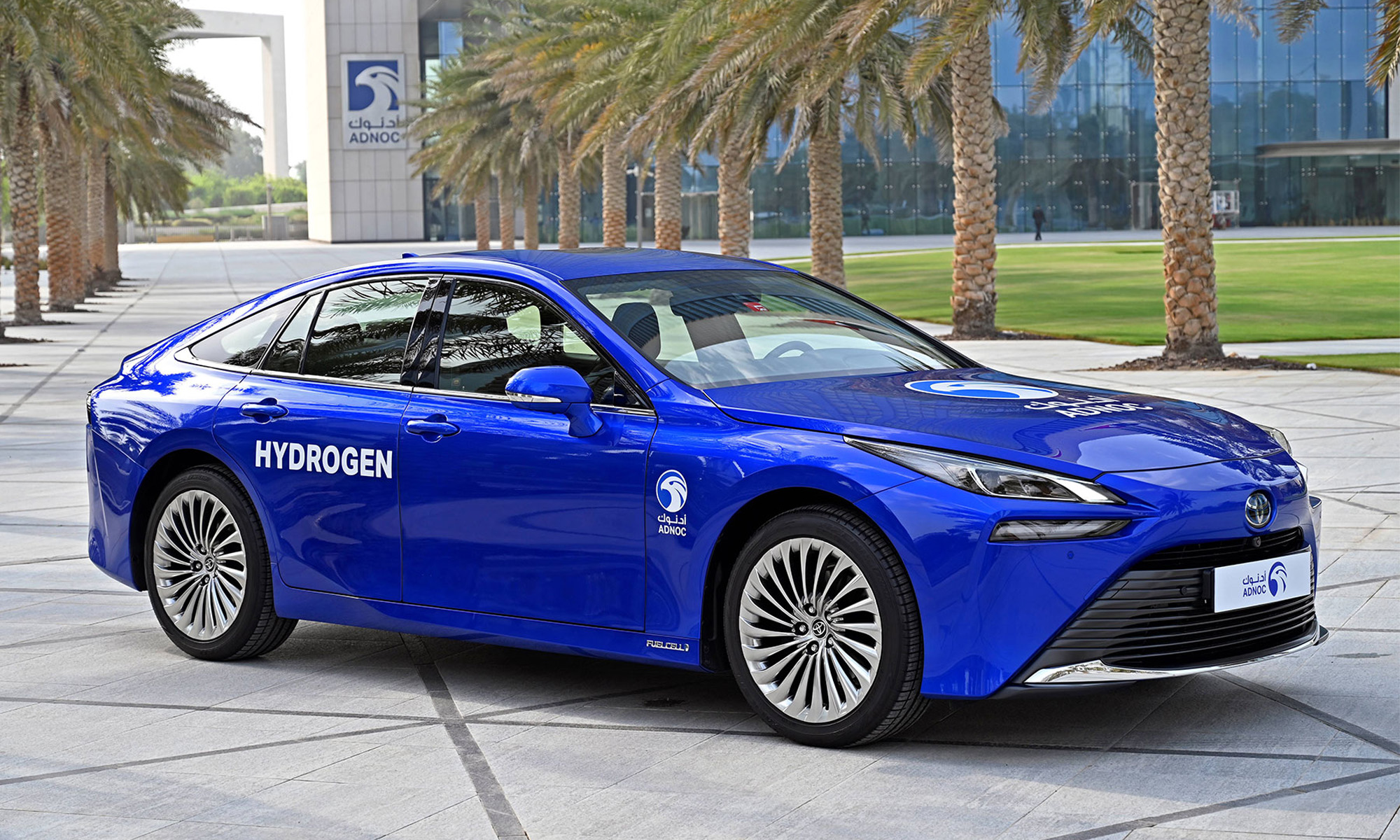News
Hydrogen Vehicle Refueling Is Coming To The Middle East
Abu Dhabi National Oil Company is constructing a high-speed refueling station in Masdar City.

As the Middle East undergoes a significant transition away from oil-based energy production, new technologies are required to meet growing demands. At the forefront of this enormous task is clean hydrogen production and delivery.
In a bid to ramp up sustainable fuel distribution and aid decarbonization, the Abu Dhabi National Oil Company (ADNOC) has announced plans to construct the Middle East’s first hydrogen refueling station in Masdar City. The high-speed refueling station will produce clean hydrogen from water using an electrolyzer powered by renewable electricity.
ADNOC has also entered a strategic partnership with Toyota and Al-Futtaim Motors to test the refueling station using a fleet of hydrogen-powered cars. The collaborative effort aims to assess the performance of this eco-friendly fuel and gather data to support the development of a UAE-wide hydrogen infrastructure.
Also Read: Threads: Everything You Should Know About The Twitter Alternative
His Excellency Dr. Sultan Ahmed Al Jaber, Minister of Industry and Advanced Technology and ADNOC Managing Director and Group CEO, said: “The need to reduce carbon emissions to address climate change is clear and urgent. ADNOC is placing sustainability and decarbonization at the heart of its strategy, and while we decarbonize our operations today, we are making robust investments to be a supplier of choice for the clean energies of tomorrow”.
The pilot program will help the Abu Dhabi National Oil Company gain insights into the potential of high-speed hydrogen refueling for mobility projects, aligning well with the UAE’s National Hydrogen Strategy, which will position the Emirates as a leading global producer of clean hydrogen by 2031.
News
Google Releases Veo 2 AI Video Tool To MENA Users
The state-of-the-art video generation model is now available in Gemini, offering realistic AI-generated videos with better physics, motion, and detail.

Starting today, users of Gemini Advanced in the MENA region — and globally — can tap into Veo 2, Google’s next-generation video model.
Originally unveiled in 2024, Veo 2 has now been fully integrated into Gemini, supporting multiple languages including Arabic and English. The rollout now brings Google’s most advanced video AI directly into the hands of everyday users.
Veo 2 builds on the foundations of its predecessor with a more sophisticated understanding of the physical world. It’s designed to produce high-fidelity video content with cinematic detail, realistic motion, and greater visual consistency across a wide range of subjects and styles. Whether recreating natural landscapes, human interactions, or stylized environments, the model is capable of interpreting and translating written prompts into eight-second 720p videos that feel almost handcrafted.
Users can generate content directly through the Gemini platform — either via the web or mobile apps. The experience is pretty straightforward: users enter a text-based prompt, and Veo 2 returns a video in 16:9 landscape format, delivered as an MP4 file. These aren’t just generic clips — they can reflect creative, abstract, or highly specific scenarios, making the tool especially useful for content creators, marketers, or anyone experimenting with visual storytelling.
Also Read: Getting Started With Google Gemini: A Beginner’s Guide
To ensure transparency, each video is embedded with SynthID — a digital watermark developed by Google’s DeepMind. The watermark is invisible to the human eye but persists across editing, compression, and sharing. It identifies the video as AI-generated, addressing concerns around misinformation and media authenticity.
While Veo 2 is still in its early phases of public rollout, the technology is part of a broader push by Google to democratize advanced AI tools. With text-to-image, code generation, and now video creation integrated into Gemini, Google is positioning the platform as a full-spectrum creative assistant.
Access to Veo 2 starts today and will continue expanding in the coming weeks. Interested users can try it out at gemini.google.com or through the Gemini app on Android and iOS.






















